Carriage of batteries onboard a bus
The carriage is subject to the current provisions of the Transport of Dangerous Goods by Road manual and Matkahuolto’s provisions and instructions.
Packing of batteries
The batteries must be packed in rigid outer packaging. The battery terminals must be protected against the risk of short circuit. When packing, make sure that the terminals are not subject to load when other goods are piled on top of them. The package must be marked with ADR labels and the necessary package markings. Batteries containing liquid must be marked with arrows markings indicating the transport orientation on two sides of the package. The package must have the letters “UN” written or printed on it, followed by the UN number of the substance. An address card with ADR markings and other required information in accordance with the regulations must be glued to the packaging.
Sending of acidulated and dry batteries
The following acidulated batteries may be transported onboard a bus (official shipping name, class and potential package group, followed by a reference to potential special provision or other remark below them):
UN 2794 Batteries, wet, filled with acid, electric storage, 8
Label 8
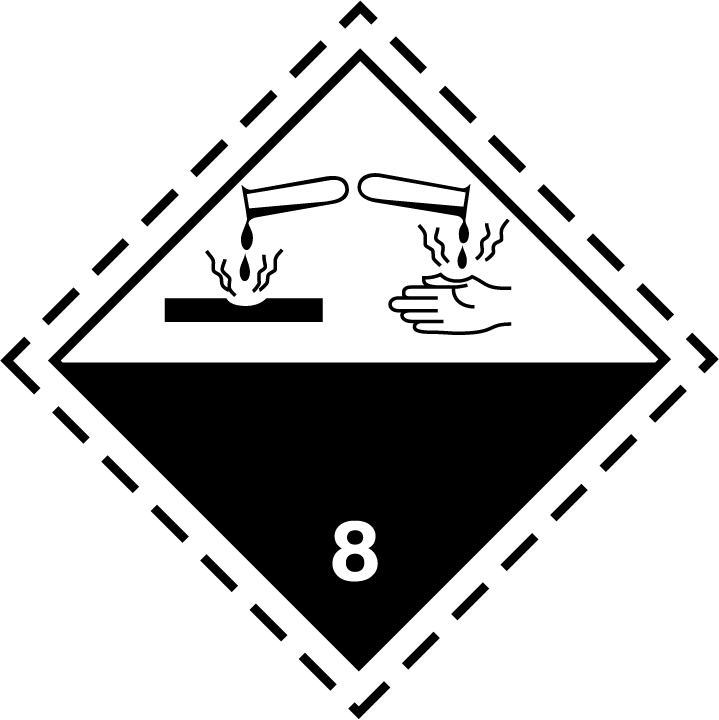
UN 2795 Batteries, wet, filled with alkali, electric storage, 8
Label 8

UN 2800 Batteries, wet, non-spillable, electric storage, 8
Label 8

Not subject to these provisions if special provision 238 is met.
UN 3028 Batteries, dry, containing potassium hydroxide solid, electric storage, 8
Label 8

Not subject to these provisions if special provision 304 is met.
The following batteries may not be transported onboard a bus:
UN 3292 Batteries, containing sodium, or cells, containing sodium, 4.3
Example of labeling a package containing an acidulated battery:
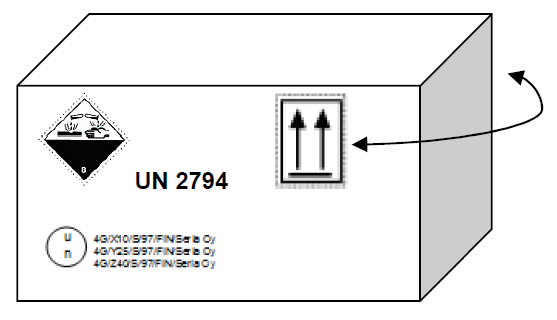
(arrow marking indicating the transport direction on two opposite sides)
Sending of lithium metal and lithium ion batteries and regular batteries
The following batteries may be transported onboard a bus (official shipping name, class and potential package group, followed by a reference to potential special provision or other remark below them):
UN 3090 Lithium metal batteries (including lithium alloy batteries), 9
Label 9A

Not subject to these provisions if special provision 188 (exemption) of the manual is met. Package label:
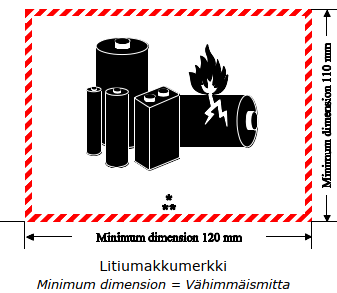
UN 3091 Lithium metal batteries contained in equipment or lithium metal batteries packed with equipment (including lithium alloy batteries), 9
Label 9A

Not subject to these provisions if special provision 188 (exemption) of the manual is met. Package label:

UN 3480 Lithium ion batteries (including lithium ion polymer batteries), 9
Label 9A

Not subject to these provisions if special provision 188 (exemption) of the manual is met. Package label:

UN 3481 Lithium ion batteries contained in equipment or lithium ion batteries packed with equipment (including lithium ion polymer batteries), 9
Label 9A

Not subject to these provisions if special provision 188 (exemption) of the manual is met. Package label:

UN 3496 Batteries, nickel-metal hybride, 9 (the so-called regular batteries)
Not subject to ADR
Classification of lithium metal and lithium ion batteries
If the following quantities are exceeded, the consignment is subject to ADR and the consignment package must be provided with warning label 9A and the ADR details must be stated in the consignment note:

Lithium metal or lithium alloy cell: amount of lithium 1 g
Lithium metal or lithium alloy battery: total amount of lithium 2 g
Lithium ion cell: rated power 20 Wh (Wh = Ah x V)
Lithium ion (polymer) battery: total rated power 100 Wh
If the above mentioned quantities are not met, but the battery is not contained with the device or there are 3 or more devices in one package, the lithium battery label must be attached to all packages in the consignment.

Otherwise, the consignment is not subject to ADR.
Examples of marking the packages included in lithium metal and lithium ion battery consignments
No exemptions:
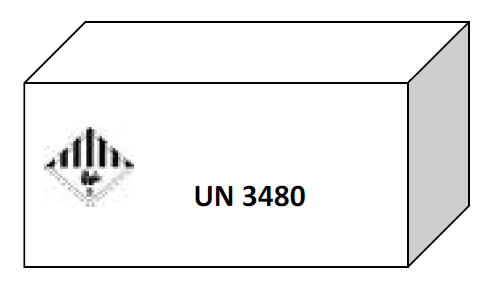
Exempted with special provision 188:
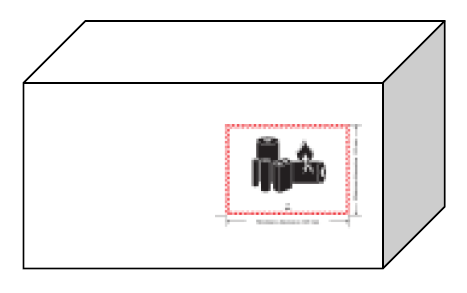
Special provision 188
Cells and batteries offered for carriage are not subject to these provisions if they meet the following:
For a lithium metal or lithium alloy cell, the lithium content is not more than 1 g.
For a lithium ion cell, the Watt-hour rating is not more than 20 Wh.
Note: When lithium batteries in conformity with 2.2.9.1.7 (f) are carried in accordance with this special provision, the total lithium content of all lithium metal cells contained in the battery shall not exceed 1.5 g and the total capacity of all lithium ion cells contained in the battery shall not exceed 10 Wh (see special provision 387).For a lithium metal or lithium alloy battery the aggregate lithium content is not more than 2 g.
For a lithium ion battery, the Watt-hour rating is not more than 100 Wh.
Lithium ion batteries subject to this provision shall be marked with the Watt-hour rating on the outside case, except those manufactured before 1 January 2009.
Note: When lithium batteries in conformity with 2.2.9.1.7 (f) are carried in accordance with this special provision, the total lithium content of all lithium metal cells contained in the battery shall not exceed 1.5 g and the total capacity of all lithium ion cells contained in the battery shall not exceed 10 Wh (see special provision 387).Each cell or battery meets the provisions of 2.2.9.1.7 (a), (e), (f) if applicable and (g).
Cells and batteries, except when installed in equipment, shall be packed in inner packagings that completely enclose the cell or battery.
Cells and batteries shall be protected so as to prevent short circuits. This includes protection against contact with electrically conductive material within the same packaging that could lead to a short circuit. The inner packagings shall be packed in strong outer packagings which conform to the provisions of 4.1.1.1, 4.1.1.2 and 4.1.1.5.
Cells and batteries when installed in equipment shall be protected from damage and short circuit, and the equipment shall be equipped with an effective means of preventing accidental activation. This requirement does not apply to devices which are intentionally active in carriage (radio frequency identification (RFID) transmitters, watches, sensors, etc.) and which are not capable of generating a dangerous evolution of heat. When batteries are installed in equipment, the equipment shall be packed in strong outer packagings constructed of suitable material of adequate strength and design in relation to the packaging’s capacity and its intended use unless the battery is afforded equivalent protection by the equipment in which it is contained.
Each package shall be marked with the appropriate lithium battery mark. This requirement does not apply to: packages containing only button cell batteries installed in equipment (including circuit boards); and packages containing no more than four cells or two batteries installed in equipment, where there are not more than two packages in the consignment.
When packages are placed in an overpack, the lithium battery mark shall either be clearly visible or be reproduced on the outside of the overpack and the overpack shall be marked with the word “OVERPACK”. The lettering of the “OVERPACK” mark shall be at least 12 mm high.
Note: Packages containing lithium batteries packed in conformity with the provisions of Part 4, Chapter 11, packing instructions 965 or 968, Section IB of the ICAO Technical Instructions that bear the mark as shown in 5.2.1.9 (lithium battery mark) and the label shown in 5.2.2.2.2, model No. 9A shall be deemed to meet the provisions of this special provision.Except when batteries are installed in equipment, each package shall be capable of withstanding a 1.2 m drop test in any orientation without damage to cells or batteries contained therein, without shifting of the contents so as to allow battery to battery (or cell to cell) contact and without release of contents.
Except when batteries are installed in or packed with equipment, packages shall not exceed 30 kg gross mass. As used above and elsewhere in these provisions, “lithium content” means the mass of lithium in the anode of a lithium metal or lithium alloy cell. As used in this special provision, “equipment” means apparatus for which the lithium cells or batteries will provide electrical power for its operation. Separate entries exist for lithium metal batteries and lithium ion batteries to facilitate the carriage of these batteries for specific modes of carriage and to enable the application of different emergency response actions.
A single cell battery as defined in Part III, sub-section 38.3.2.3 of the Manual of Tests and Criteria is considered a “cell” and shall be carried according to the requirements for “cells” for the purpose of this special provision.
Special provision 387
Lithium batteries in conformity with 2.2.9.1.7 (f) containing both primary lithium metal cells and rechargeable lithium ion cells shall be assigned to UN Nos. 3090 or 3091 as appropriate. When such batteries are carried in accordance with special provision 188, the total lithium content of all lithium metal cells contained in the battery shall not exceed 1.5 g and the total capacity of all lithium ion cells contained in the battery shall not exceed 10 Wh.
According to special provision 188, packages containing lithium cells or batteries offered for carriage must be labelled with a mark.
The mark must indicate the UN number, preceded by the letters “UN”; e.g. “UN 3090” for lithium metal cells or batteries or “UN 3480” for lithium ion cells or batteries.
Where the lithium cells or batteries are contained in, or packed with, equipment, the corresponding markings must be added, e.g. “UN 3091” or “UN 3481”.
Where a package contains lithium cells or batteries assigned to different UN numbers, all applicable UN numbers must be indicated on one or more marks.
The lithium battery mark shall be used in packages containing lithium batteries and cells when the consignment is exempted from ADR under special provision 188:

* Indicate the UN number(s) here.
** Indicate the consignee’s telephone number for further information here.
The mark must be in the form of a rectangle with hatched edging. The mark must be a minimum dimension of 120 mm wide × 110 mm high and the minimum width of the hatching must be 5 mm The symbol (group of batteries, one damaged and emitting flame, above the UN number for lithium ion or lithium metal batteries or cells) must be black on white or suitable contrasting background. The hatching must be red. If the size of the package so requires, the dimensions/line thickness may be reduced to not less than 105 mm wide × 74 mm high.
Where dimensions are not specified, all features must be in approximate proportion to those shown in the illustration.
Package label 9A is to be used when lithium ion batteries are not exempted from ADR under any special provisions:

Package label 8 is to be used when batteries of hazard class 8 are not exempted from ADR under any special provisions:

Choose Finland’s most valued parcel carrier